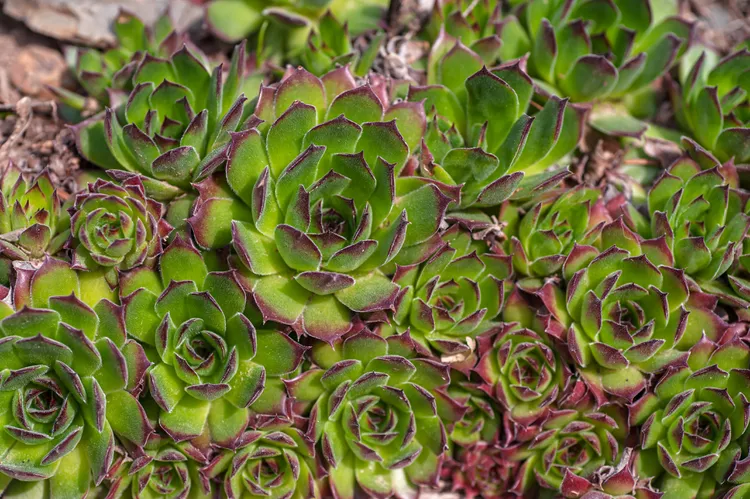
Description
About thirty species of low-growing succulent plants in the stonecrop family (Crassulaceae) belong to the genus Houseleek (Sempervivum). Houseleeks typically feature dense rosettes of thick, meaty leaves. In a cluster surrounding the parent plant, little plantlets known as offsets emerge. Since each rosette is monocarpic, it perishes after flowering but the clonal offsets endure.
Habitat
Native to Europe, Morocco, and western Asia is this herb. Some species grow atop thatched roofs in Europe, hence the term “houseleek”; “live-forever” denotes a species’ hardiness and durability.
Uses
Severe diarrhea is treated with houseleek. Certain individuals apply houseleek topically to treat burns, ulcers, warts, and swollen, blistering skin brought on by bug stings. Mouth ulcers are treated with a gargle made of the diluted juice.

Varieties
S.tectorum is available in a number of commercial cultivars that have been cultivated for various leaf colors and forms.
The leaves of ‘Bernstein’ are copper and gold.
The striking “Big Blue” variety has bluish-green foliage.
The beautiful variety “Black” has green foliage with purple tips.
The variant known as “Terracotta Baby” has vivid orange-red foliage.
‘Claudia’ features vivid red foliage in huge rosettes.
The 5-inch rosettes of the “Herringer Rose” have red leaves that have a hint of brown.
The leaves of ‘Launcelot’ are reddish-brown.
‘Morgenrote’ is a stunning cultivar with green-edged plumb-red leaves.
‘Pelora’ is a unique mutant type characterized by bullet-shaped, bright green leaves.
Plant Care
- Light
Plant your Houseleek in full sun for at least six hours a day to ensure excellent foliage colors and an abundance of offsets. Nevertheless, the plants can also thrive in some partial shade, particularly if they are cultivated in an exceptionally hot and dry environment.
- Soil
Sand or gravelly soil is ideal for houseleek plants, however they are particularly carefree about it. The soil must drain adequately, which is the primary requirement for the plant. In order to improve aeration and drainage in heavy soil, incorporate gravel, pumice, sand, or perlite into the mixture. Neutral soil is preferred for these plants.
The best potting media for plants grown in containers is a mixture designed specifically for cacti and succulents.
- Water
Due to their drought tolerance, houseleek perennials can go for weeks at a time without needing to be watered. Provide enough water to recently transplanted plants to aid in their establishment, but once established, take care not to overwater them. Prior to irrigation, ensure the soil is dry.
- Temperature and Humidity
Although it may be cultivated in a variety of climates, houseleek prefers an average temperature of between 65 and 75 degrees Fahrenheit. They won’t necessarily go extinct if temperatures fall too low, but they will undoubtedly cease growing and enter a semi-dormant state. Furthermore, Houseleek are highly well-liked in arid regions and can withstand a broad range of humidity levels.
- Fertilizer
Even with poor soils, this ground cover can flourish. They enjoy a slow-release fertilizer with helpful soil microorganisms and low nitrogen content that is intended for succulents or cacti. Take care not to fertilize too much.
Table





